Tidal Exchange




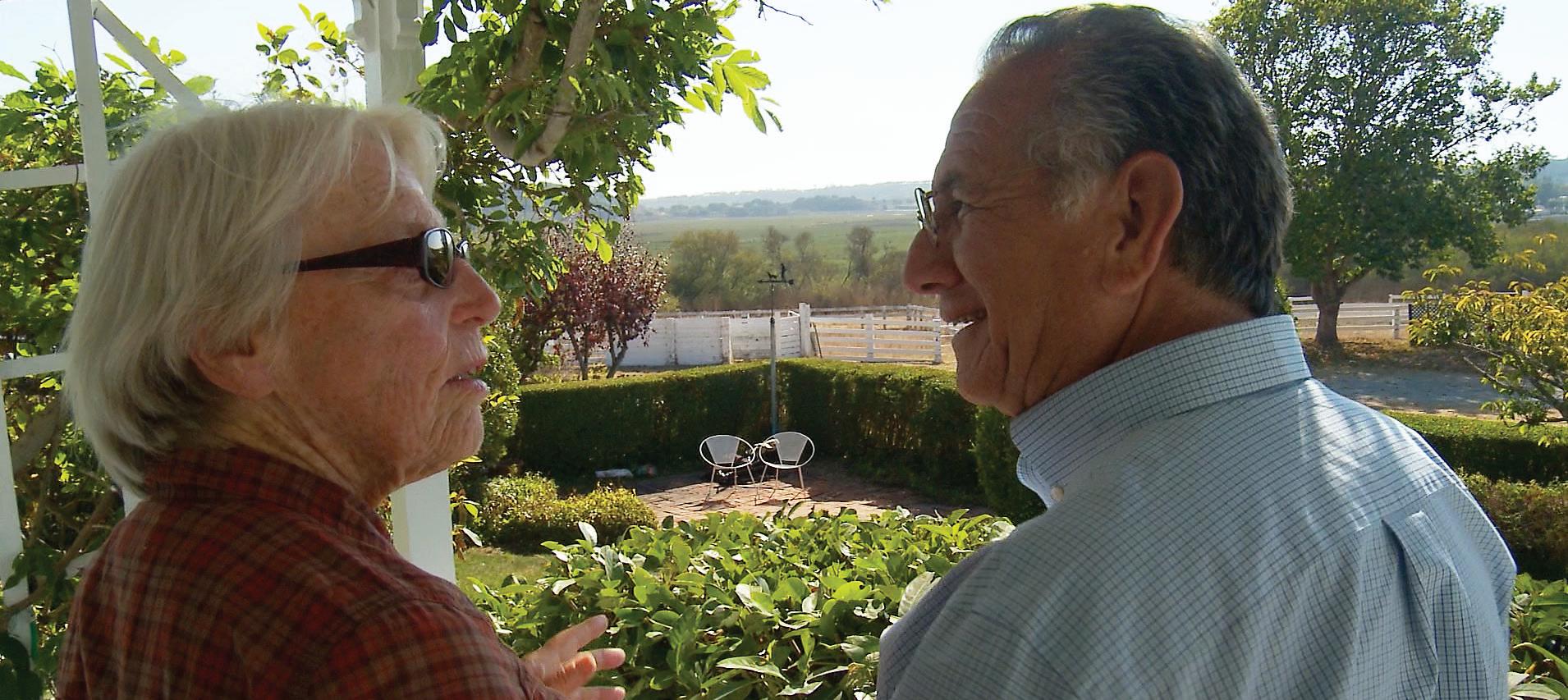







As she strolls through the gardens of her childhood home, Diane Porter Cooley reflects on growing up on a ranch that embodies the rich history of California.
In 1850, a young man from Massachusetts named John T. Porter sailed around Cape Horn through the Golden Gate, looking for opportunity in the golden West. He made a name for himself on the central coast of California and, in 1859, was appointed customs officer for the Port of Monterey by President Lincoln, an office Porter held through 1865.
In 1864, Porter purchased a sizable portion of the Rancho Bolsa de San Cayetano land grant from the family of Mariano Vallejo. When Porter established the Bank of Watsonville, he and his family moved into the landmark Porter-Vallejo Mansion, on the northern part of the rancho near Pajaro. Toward the other end of his property, near the community of Las Lomas and the northeastern reaches of the slough, Porter held a productive dairy ranch — part of the early Elkhorn Slough dairy boom.

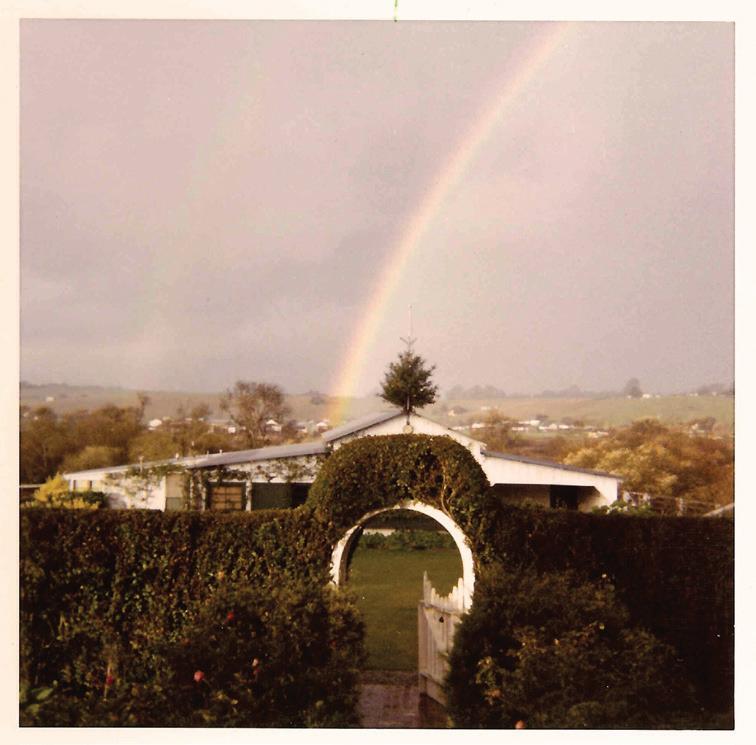


The dairyman’s cottage and surrounding lands eventually became the home of John T. Porter’s grandson and his family — Tom and Bernice Porter, and their daughter Diane. Beginning in the 1970s, the Porter family donated more than 300 acres of Porter Ranch for conservation.
“Th is land was the dairy, which was very beautifully situated near the uplands where the cattle could graze in the spring, summer and fall. When freshwater flooding the lowlands receded, they could move the cattle down to the green marshy grasslands,” says Diane Porter Cooley.
Elkhorn Slough Foundation

Judith Connor President
Anne Olsen Vice President
C. Michael Pinto Treasurer
Robert Hartmann Secretary
Steven Webster Past President
Ed Boutonnet
Terry Eckhardt
Sandy Hale
Kent Marshall
Anne Secker
Murry Schekman
Thomas Williams
Mary Wright
Mark Silberstein Executive Director

The mission of the Elkhorn Slough Foundation is to conserve and restore Elkhorn Slough and its watershed.
We see Elkhorn Slough and its watershed protected forever— a working landscape, where people, farming, industry, and nature thrive together. As one of California’s last great coastal wetlands, Elkhorn Slough will remain a wellspring of life and a source of inspiration for generations to come
PO Box 267, Moss Landing California 95039
tel: (831) 728-5939 fax: (831) 728-7031 www.elkhornslough.org
TIDAL EXCHANGE
Scott Nichols, Editor
2015 Elkhorn Slough Foundation
Thanks for Celebrating National Estuaries Day at the Reserve!
Thanks to our friends and neighbors of all ages who joined us in celebrating National Estuaries Day at the 2015 Elkhorn Slough Reserve Open House & Native Plant Fair. We hope you had as much fun as we did!

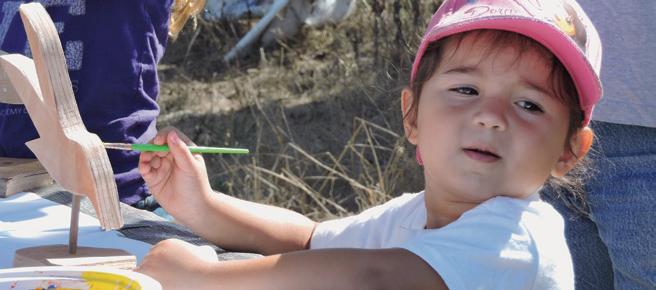

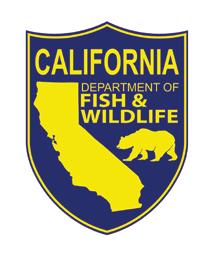
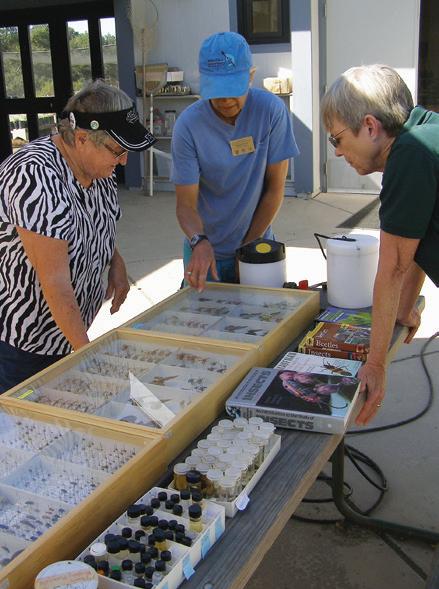
You can see additional photos and keep posted on walks, talks and events online. Stay connected on Facebook, YouTube, and Twitter! For links and more information, visit www.elkhornslough.org
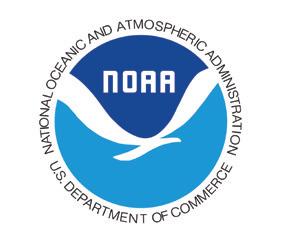
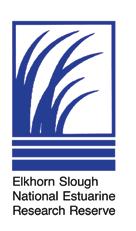
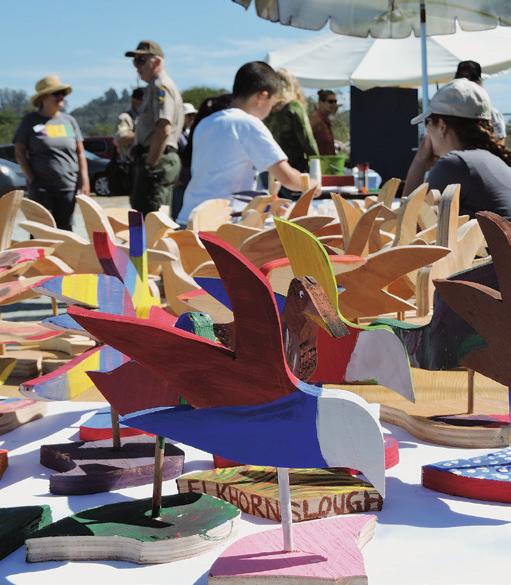
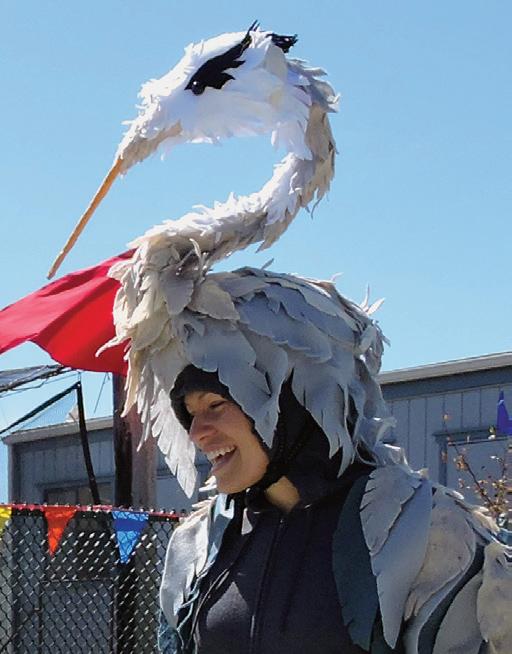

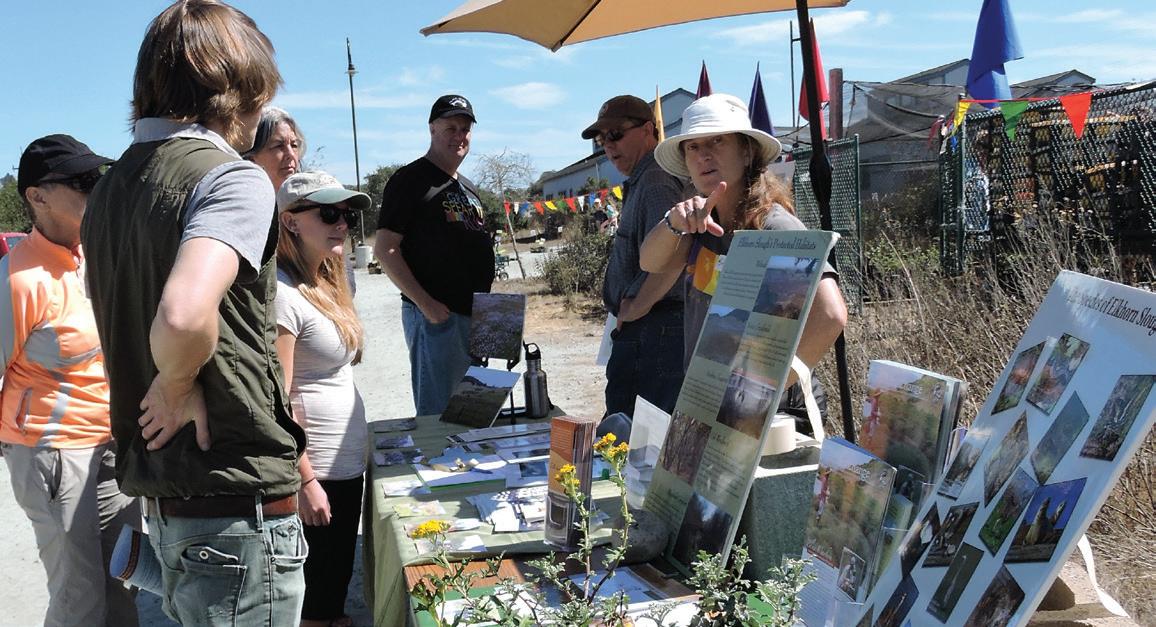

Each year more than 4,000 students in grades K–12 visit the Elkhorn Slough Reserve. They participate in field walks, explore the Visitor Center, and discover small creatures in the Microscope Learning Lab. And yet, each year there are thousands more who are unable to visit the Reserve due to lack of funding for their schools.
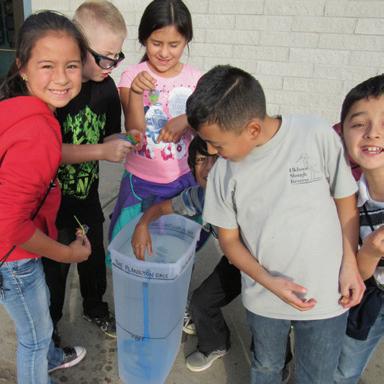
A key hurdle for schools wishing to visit the slough is transportation. Many local schools simply don’t have funds available to pay for school buses nor do they have parents able to take time off to drive students.
Th is past January ESF and the Reserve Education team joined forces to set up a “Fund the Bus” donation box

ESF and the Reserve were pleased to host illustrator Debby Kaspari as this year’s Elkhorn Slough Artist in Residence. The Artist in Residence program is the legacy of late local artist Mary Warshaw (1931-2010) who served as Elkhorn Slough’s first Artist in Residence.
Debby Kaspari is a noted scientific illustrator and freelance artist whose work includes Cornell University's Field Guide to Birds of Trinidad and Tobago (2012), as well as a number of covers and illustrations for Birdwatcher’s Digest.
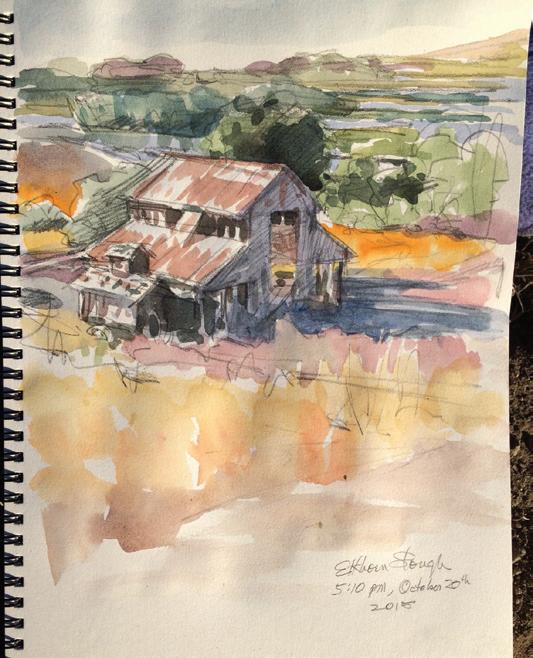
“Along with being an incredibly talented artist, Debby carries forward the tradition of bridging science, nature, and creativity that has motivated our work from the beginning,” says ESF Executive Director Mark Silberstein.
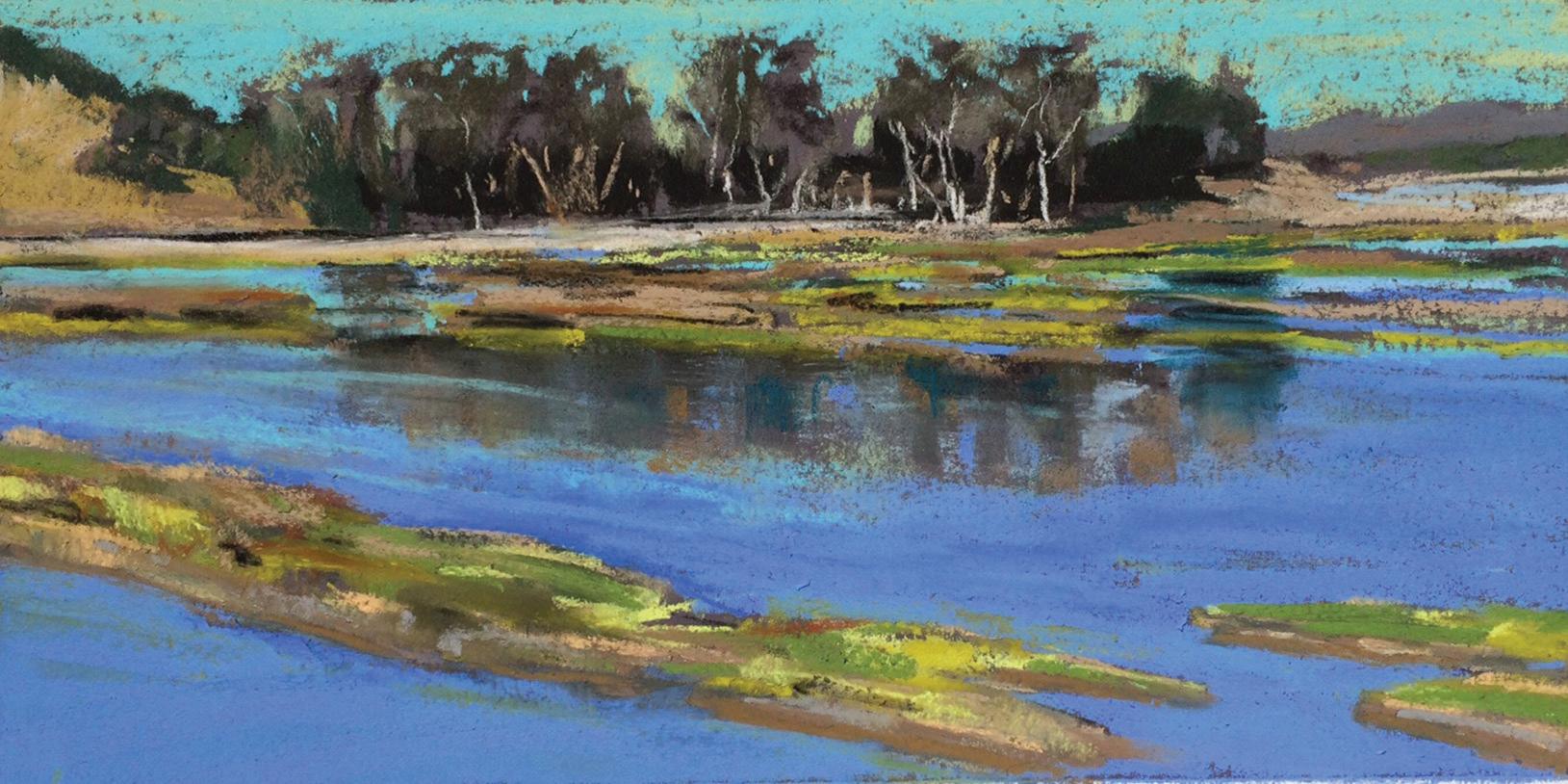
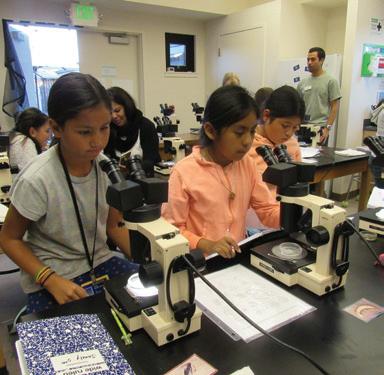





Originally from the San Francisco Bay Area, Kaspari graduated from California College of Arts and Crafts in 1981. Mark introduced her to the beauty of Elkhorn Slough and its wildlife while he was a graduate student at Moss Landing Marine Laboratories in the late 1970s, before the Reserve and Foundation were established.
“Working on the central California coast has been a sort of homecoming,” Debby says. “Elkhorn Slough has a

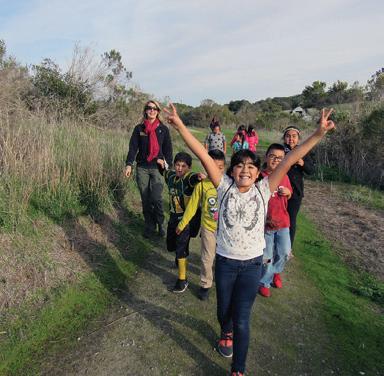
in the Visitor Center. Thanks to the generous donations of visitors and staff there are sufficient funds to award several schools with Transportation Mini Grants for the 2015/2016 school year.
More than 20 schools requested support for the first round of grants. Applications that outlined a clearly defined need and a lesson plan aligned with our goals of watershed
wonderfully diverse and expansive landscape, rich with life and color. With grasslands and woodlands, water and wetlands, there’s just no shortage of artistic inspiration.”
In addition to leading a field sketching workshop at the Reserve, Kaspari also generously donated a watercolor sketch and pastel painting to the Foundation.
You can view Debby Kaspari’s artwork on her blog, Drawing the Motmot (drawingthemotmot.wordpress.com).
And, next time you visit the Reserve, shop the Visitor Center bookstore for notecards, posters, and artwork created by artists like Debby, inspired by the Elkhorn Slough. n
education and environmental stewardship and research were selected. Our inaugural grants were provided to eight local schools receiving grants ranging from $50 to $300. These field trips will enable 800 students to travel to the Reserve to explore the slough through a variety of educational activities.


You can help us continue to support the transportation grants for Reserve field trips by donating to the “Fund the Bus” donation box in the Visitor Center the next time you visit the Reserve. n
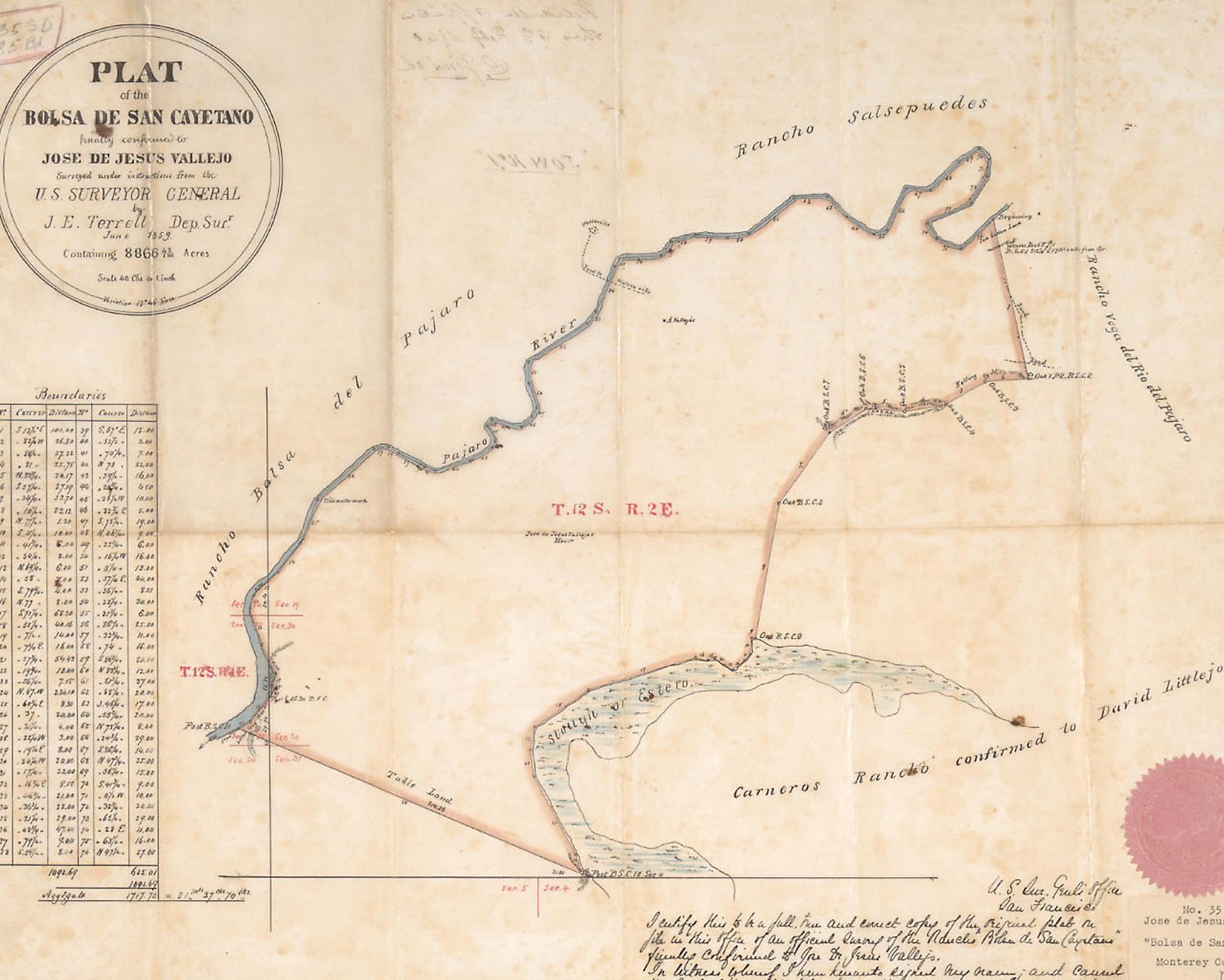

1900
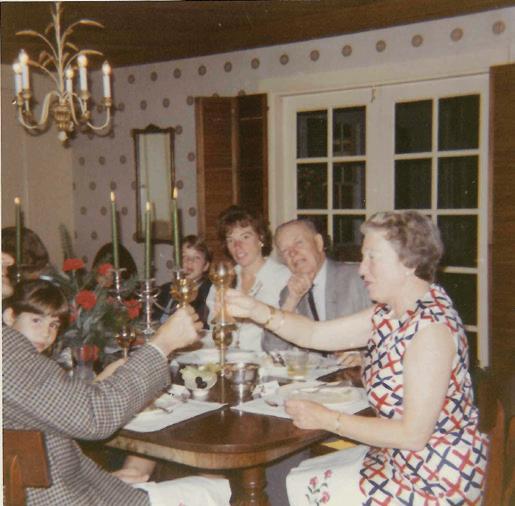
1864

(continued from cover)
The Elkhorn Slough Foundation's land conservation efforts at Porter Ranch have been a great success. Yet conservation doesn’t stop an iconic building from aging.
By the time Diane’s family lived at Porter Ranch, dairy operations had ceased; instead, her father, Tom, ran cattle on the ranch’s expansive grasslands.

“My mother, Bernice, instilled in me a deep level of love for this place,” relates Diane fondly. “And my father, as a scientific farmer and cattle rancher, taught me the practical importance of taking care of the land.”
1976 The Porters begin donating their ranch to conservation, including almost 100 acres to The Nature Conservancy. By 1992, ESF manages TNC's holdings at Elkhorn Slough, including Porter Ranch.



1927


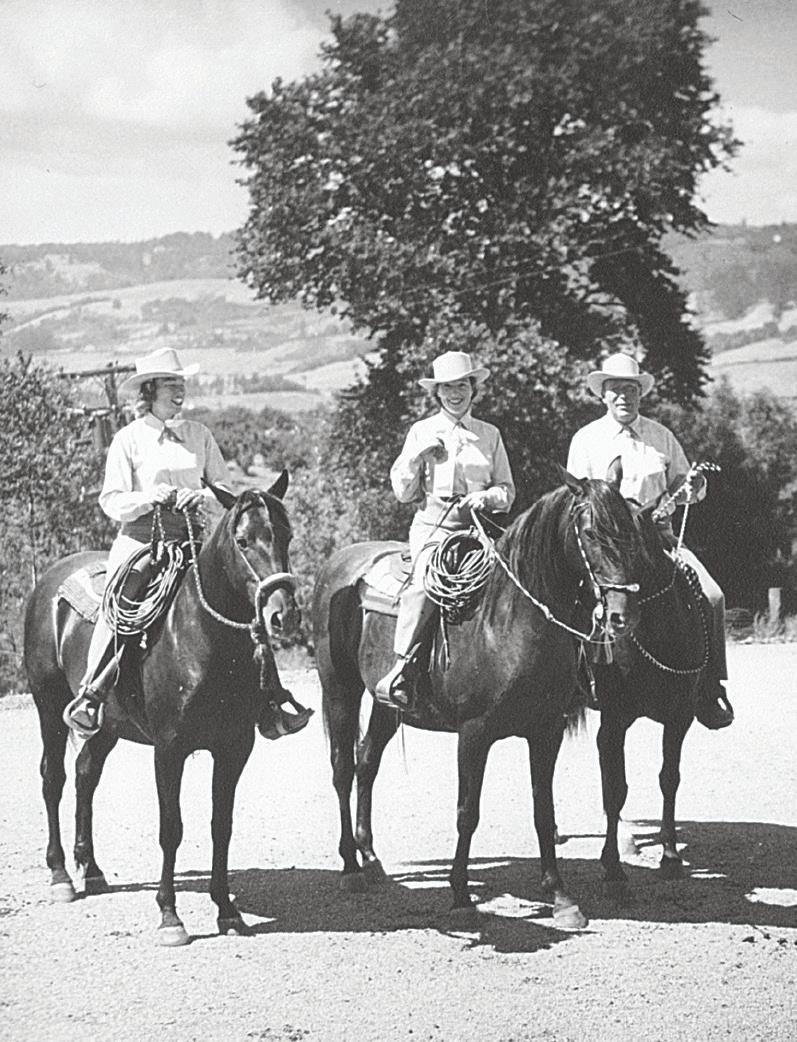
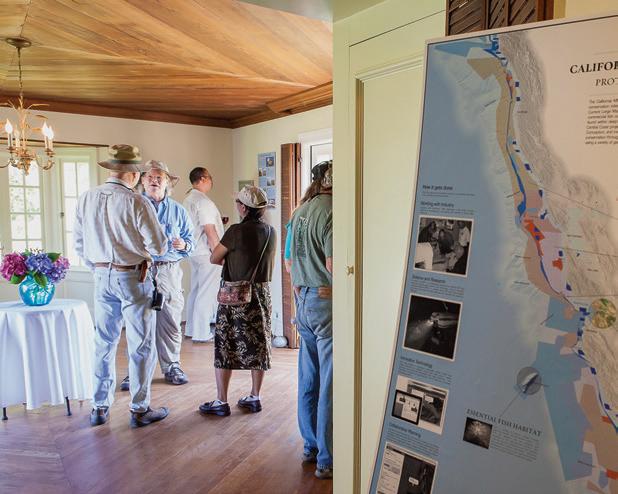
2001 The Porters donate more than 200 acres to ESF for conservation. In 2012, TNC transfers fee ownership of its Elkhorn Slough legacy holdings, including the Porter Ranch house, to the Foundation.




As part of ESF’s holistic land management program, we continue to graze cattle at Porter Ranch, which keeps weeds and exotic grasses in check so that native grasses and wildflowers — such as the endangered Santa Cruz Tarplant — have the chance to compete and thrive.
The Porter Ranch House overlooks a cross section of the remarkable landscape ESF is working to restore and protect: the freshwater rivulets of Carneros Creek, the tidal marshes of the upper slough, the rolling coastal prairie of Porter Ranch, fertile farm fields near the community of Las Lomas, and a mosaic of oak woodlands, coastal scrub and maritime chaparral in the surrounding hills.
“For me, the land has always been tied to a sense of discovery and freedom, of going out everyday wondering what new things I’d fi nd,” says Diane. “I think more people ought to have that experience. And I believe that people who have the chance to be out on the land — even on a couple of nature walks — get it.”
ESF’s conservation efforts on Porter Ranch have enjoyed extraordinary success. Yet conservation doesn’t stop an iconic building from aging, or land from shifting.
“More than a century old, this home is feeling its age. The structure has begun to fail, with its sides sinking, and the kitchen


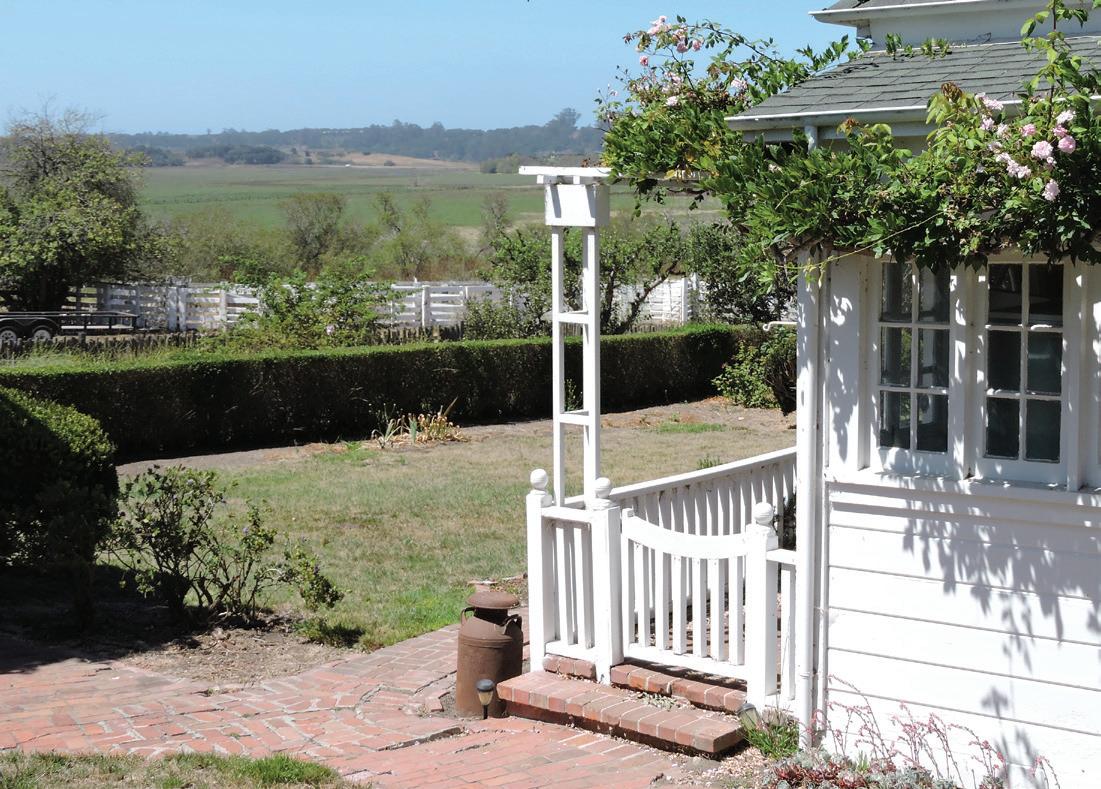




pulling away from the rest of the house,” says ESF Executive Director Mark Silberstein. “The building needs a lift, literally, to rebuild the crumbling foundation and stabilize the structure.”
We want to build a strong foundation for Porter Ranch — literally and figuratively.
As ESF’s board and staff consider the future of Porter Ranch, we envision this wonderful place serving as a center for community engagement and education. Achieving this vision will take time, community involvement, and the participation of friends, neighbors, and conservation partners — yet it is only a dream if we don’t make repairs to secure the future of the Porter Ranch House.
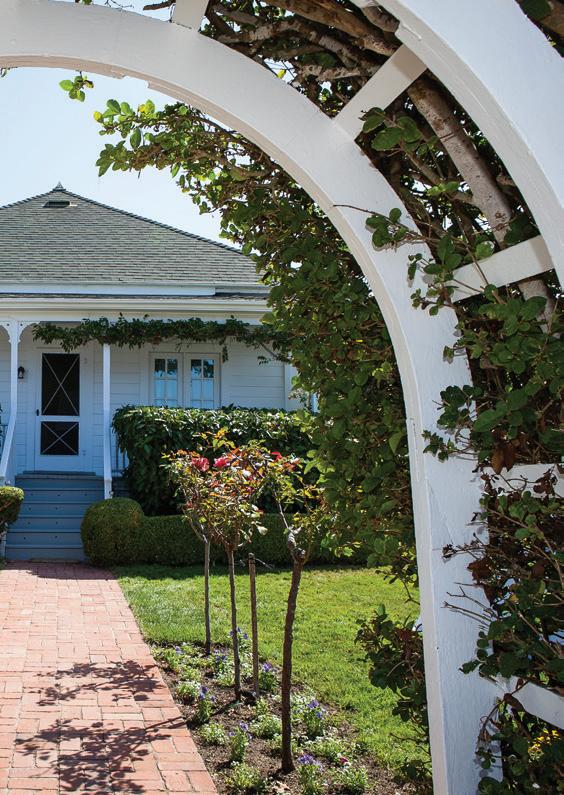


Prior to European settlement, California’s coastal prairie was once home to large herds of grazers, such as tule elk, deer and antelope, which freely roamed the landscape. Grasslands were also cleared by periodic fires. These natural disturbances kept grasslands healthy by clearing thatch, fertilizing the soil, exposing low-growing plants to sunlight, and engouraging seeds to germinate.


Around 99% of California’s native grasslands have been lost over the last 200 years. The primary threats to coastal prairie are development, which reduces connected habitat and depletes the seedbank, and invasive weeds — particularly non-native tall grasses, which overshadow native grasses and wildflowers, robbing them of sunlight and nutrients.
Research conducted on the Porter Ranch illustrated the important role cattle can have in maintaining rare grassland plants, including endangered Santa Cruz Tarplant, and native wildflowers like California poppy and sky lupine.



“Now is the time to ensure this icon of early California survives,” Mark continues. “We must act quickly to save this house for the next generation of stewards.” n
Learn how you can help conserve Porter Ranch on our website, www.elkhornslough.org.
Through ESF’s ongoing holistic land management approach the cattle continue to graze this land and the rare plants continue to grow.
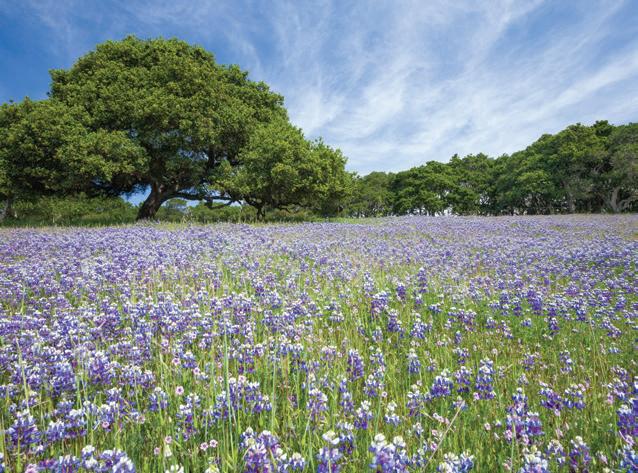

The grasslands of the Porter Ranch are a favorite spot for spring wildflower walks. The senses are livened by the sights of sturdy oaks and bright sky lupine, the faint aroma of bubblegum (a scent wafting from the lupine) and the sounds of songbirds. Porter Ranch is truly a historic gem that offers so many opportunities to learn from and enjoy nature. n
This year we planted more than 150 oak saplings on ESF’s Elzas property. Before the Foundation acquired the land in 2001, the 134-acre property had been extensively farmed. We started caring for the land first by taking it out of production, removing agricultural furrows, and giving damaged areas time to heal. With a responsible land management plan in place, we identified sites appropriate for sustainable organic farming, as well as large areas that demanded to be restored as native habitat. Planting coast live oaks in these areas is the next step in the process of restoring land from eroding agricultural slopes to oak woodland.
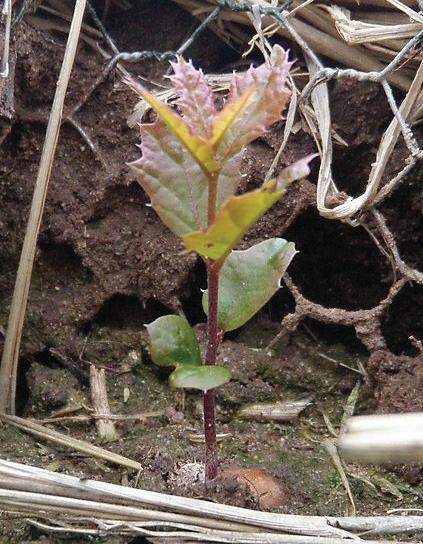
As we were planting these little oaks, we realized they would need long-term care and nurturing. The seed of an idea germinated: why not share the wonder of creating a new oak woodland with people who care about nature in the uplands of the slough? Why not let our friends show their commitment to our restoration efforts and the beauty of the Coast Live Oak with a symbolic adoption program?
Now you can help restore the native habitat of the Elkhorn Slough watershed by symbolically adopting a newly

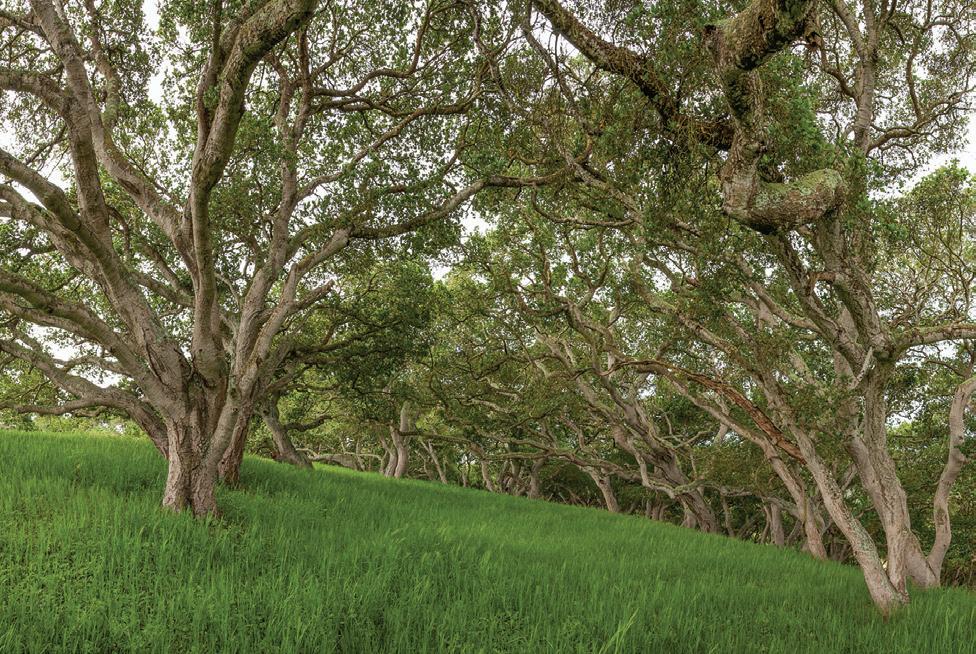
planted oak. When you “Adopt an Oak” you’ll receive a link to a geo-tagged tree assigned your name, or the name of an honoree. Using free Google Earth software, you and your honoree can watch your adopted tree grow and change — virtually — with every update of Google Earth’s satellite imagery through the years. ESF will also send you an “Oak Adoption Certificate” by email.
Imagine the joy of knowing an oak sapling is being cared for in your name. Imagine the wildlife from birds to deer that will benefit from restored oak woodland. Imagine how much good you are doing for the Elkhorn Slough watershed — not to mention the fun of adopting an oak!
Learn more — and “Adopt an Oak” today — by visiting our website at www.elkhornslough.org n
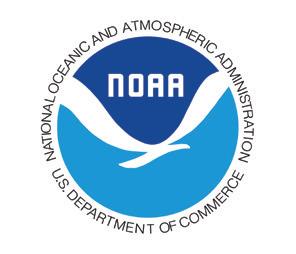
If you visited the Reserve on any given Wednesday afternoon last school year, you most likely experienced the infectious energy of some of the nearly 80 students from our neighborhood elementary school, Elkhorn Elementary, who are part of the Estuary Explorers Club.
With school back in session, the Estuary Explorers Club kicked off the start of its second year at the Elkhorn Slough Reserve. We recognized many familiar faces ready to delve deeper into our scientific secrets, as well as a flurry of fresh new Explorers excited to explore the winding trails and meandering waterways for the first time.
From grades 2-5, the Explorers are naturally playful and curious — sleuthing through the updated Visitor Center, trekking around campus, and setting out for the Overlook to begin a journey through the Elkhorn Slough watershed.
In one activity, for example, the Explorers imagine they are water droplets. The students run the water cycle obstacle course — bundling into clouds, zigzagging down mountain

slopes, dodging thirsty animals on their way to the ocean, and discovering the connections between the Slough, its inhabitants, and themselves. This joyful experience helps our local youth understand how our watershed works, and instills the importance of taking care of the environment.
The Estuary Explorers Club is a partnership between Elkhorn Slough Reserve, Elkhorn Elementary and the North Monterey County Unified School District, and is funded by the National Oceanic & Atmospheric Administration. Virginia Guhin is the Department of Fish & Wildlife education team member who oversees the program.
Our amazing Estuary Explorers are looking forward to another year of exploration and discovery — with a side of mud and dirt for fun! n
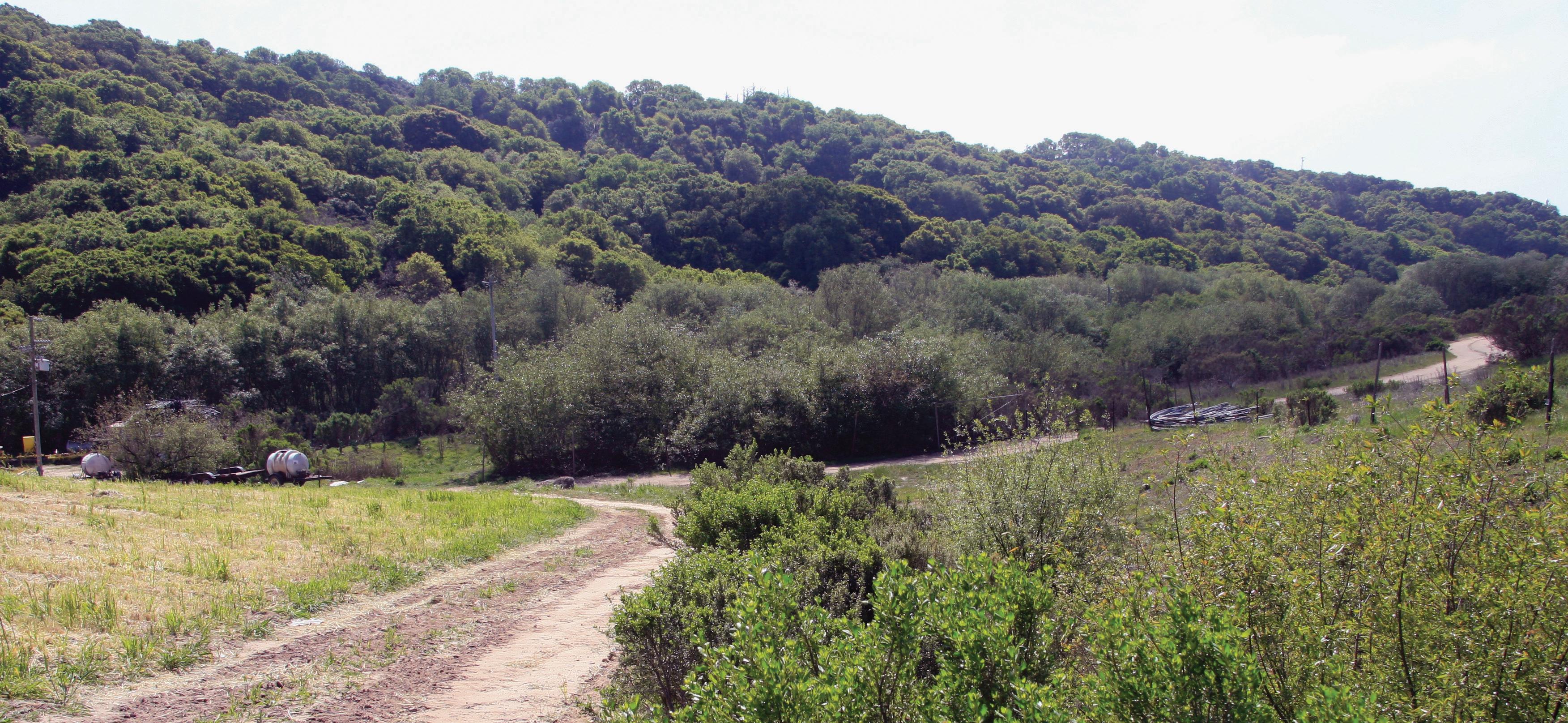
ESF Executive Director
In a watershed, everything is connected.
Early conservation efforts in protecting land at the slough — and for that matter, up and down the coast — focused on securing the lands from the high tide line down. Wetlands were the focal point of these efforts, and it was a logical target for conservation. After all, it was these aquatic environments that are biologically rich and sensitive, and that had suffered great losses over long periods of time.
The past decades have taught us that conservation of aquatic habitats doesn’t stop at the waterline. What happens upstream is critical to the health of downstream communities. Our focus expanded to include key upland properties and habitats that were inextricably linked to the health of the slough.
The Elkhorn Slough Foundation, in its early efforts to conserve the slough, found itself facing a dichotomous approach to land acquisition. We focused on protecting the best natural areas that remained in the uplands — securing land that would protect the future of rare maritime chaparral habitat, coastal prairie, and Oak woodlands. We also found ourselves acquiring properties that suffered from decades of neglect and damage — properties that contributed to chronic degradation of downstream wetlands by erosion of sediments and chemicals and by the accumulation of trash and debris.
It takes vision, dedication, and no small amount of fi nancial support to transform a worn-out sand hill farm into vital and vibrant habitat. We have been first hand witnesses of the power of nature to heal itself. We have now rehabilitated thousands of acres of lands that were blighted or damaged and watched them return to health.



We’ve seen dried springs once more seep water from hillsides, frogs and salamanders return to places long thought to be sterile and flowers spring from hillsides that were once eroding gullies.
Along the way, we’ve created a series of sustainable organic farms that contribute to the local economy while being in balance with the downstream needs of wetlands and other habitats.
With more than 25 years of water quality data, it has been demonstrated that conservation and restoration can “move the needle” on reducing nutrients coming into the upper slough.
By retiring the worn-out, steep, eroding hills from irrigation we have conserved hundreds of millions of gallons of water in the upper slough hills. Replanting native vegetation in these slopes has increased the land’s ability to capture rainfall and to begin recharging the community’s depleted aquifers.
Th is is slow, steady work. It is the fundamental commitment that a forward-thinking community invests in. We share that commitment with you and are grateful for your support. The Elkhorn Slough Foundation is, as always, dedicated to the challenge, and joy, of caring for this remarkable place. There is still more to do — more land to restore and more to conserve.
From oaks to otters — it’s all connected n
Elkhorn Slough Foundation
P.O. Box 267
Moss Landing, CA 95039
The Elkhorn Slough Reserve is open Wednesday through Sunday, 9 am to 5 pm. Join us for docent-led tours every Saturday and Sunday at �0 am a nd � pm.
HOLIDAY HOURS: The Reserve will be closed on Friday, December 25, 2015 and Friday, January l, 2016, and will close at 12:00 noon on December 24 and December 31.
SAVE THE DATES:
Thursday, December 31, 2015: Last day to increase your donation through Monterey County Gives!
Friday, January 22, 2016: King Tide Walk at Elkhorn Slough Reserve
Saturday, February 20, 2016: Community Planting & Dune Restoration at Moss Landing State Beach
ESF partners with the California Department of Fish & Wildlife and NOAA to conserve the Elkhorn Slough and its watershed.




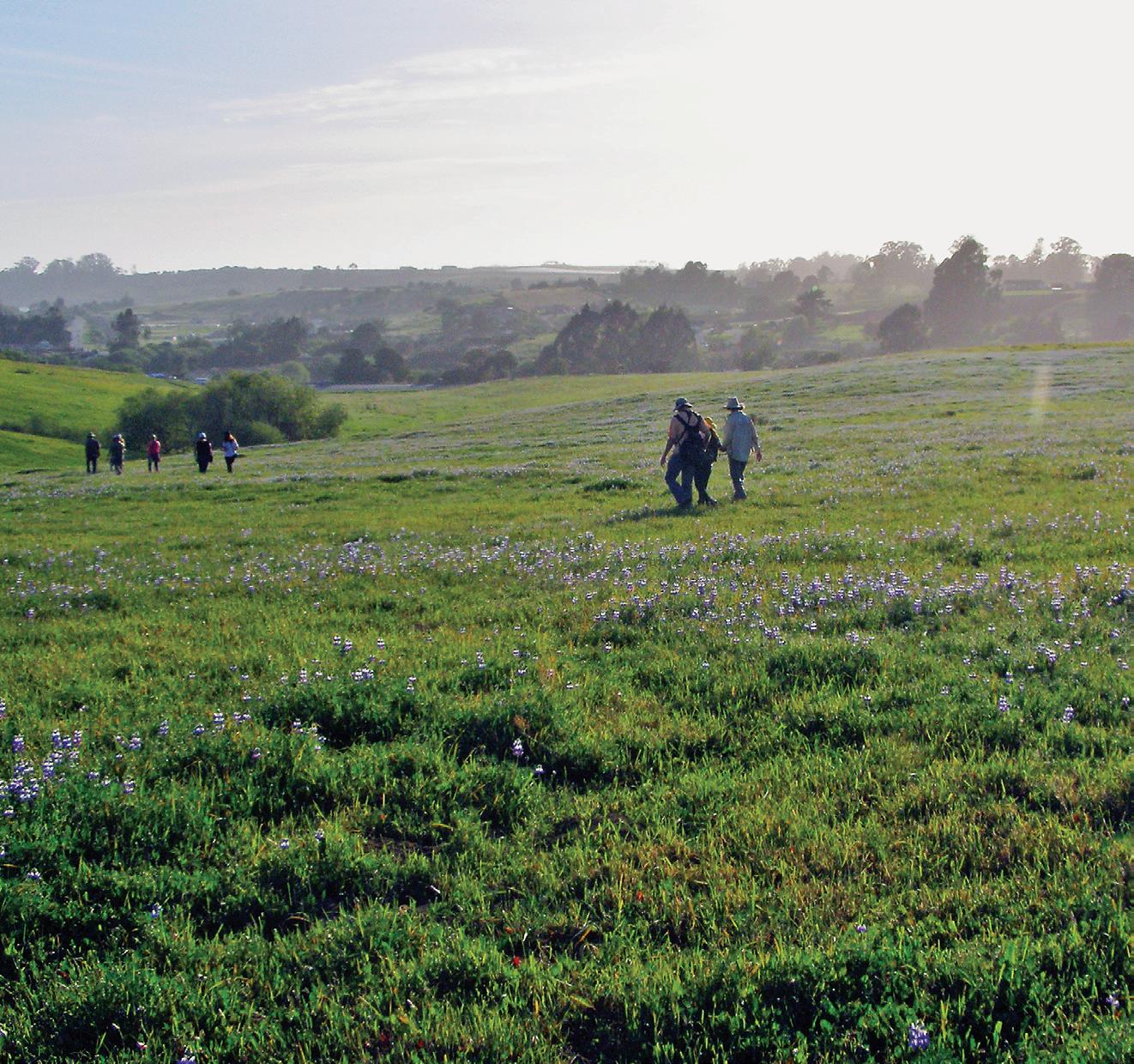
Conserving land can mean protecting 150 years of California history…

Your gift to the Elkhorn Slough Foundation through Monterey County Gives! is the first step to creating a new future for an iconic ranch.
www.elkhornslough.org